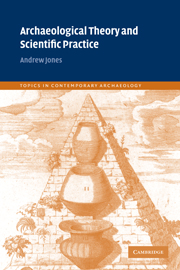Book contents
- Frontmatter
- Contents
- List of illustrations
- List of tables
- Preface
- Acknowledgements
- 1 The archaeology of ‘two cultures’
- 2 Science as culture: creating interpretative networks
- 3 Archaeology observed
- 4 Materials science and material culture: practice, scale and narrative
- 5 Material culture and materials science: a biography of things
- 6 A biography of ceramics in Neolithic Orkney
- 7 Making people and things in the Neolithic: pots, food and history
- 8 Before and after science
- References
- Index
7 - Making people and things in the Neolithic: pots, food and history
Published online by Cambridge University Press: 06 November 2009
- Frontmatter
- Contents
- List of illustrations
- List of tables
- Preface
- Acknowledgements
- 1 The archaeology of ‘two cultures’
- 2 Science as culture: creating interpretative networks
- 3 Archaeology observed
- 4 Materials science and material culture: practice, scale and narrative
- 5 Material culture and materials science: a biography of things
- 6 A biography of ceramics in Neolithic Orkney
- 7 Making people and things in the Neolithic: pots, food and history
- 8 Before and after science
- References
- Index
Summary
In the previous chapter I described the interpretative framework and analytical methodology I employed to examine the production, use and deposition of Grooved ware in the Later Neolithic settlement site of Barnhouse, Orkney. The analysis suggested that the ‘lives’ of different categories of pottery take quite different forms. Their production is associated with different areas of the settlement, while their use and deposition are framed by their association with different kinds of activity, different foods and different social occasions. The biographies of different categories of vessels are therefore associated with different, but overlapping, social identities. In this chapter I will delineate these biographies and outline their significance in relation to other sites in Later Neolithic Orkney. Following this I will examine the nature of the cultural metaphors that motivate the construction of these biographies and how these intersect with food technologies. I will then open out the discussion to examine how the social practices associated with food and pottery production are bound up with long-term settlement histories, and finally I will discuss the role of pottery and food in terms of our understanding of changing social relations during the Neolithic.
The biography of Grooved ware at Barnhouse
It is important to reiterate the distinction between the production of rock- and shell-tempered vessels. In the previous chapter I suggested that the production of shell-tempered vessels is undertaken communally in the space at the centre of the settlement, while rock-tempered vessels are produced by specific individual households.
- Type
- Chapter
- Information
- Archaeological Theory and Scientific Practice , pp. 145 - 167Publisher: Cambridge University PressPrint publication year: 2001



